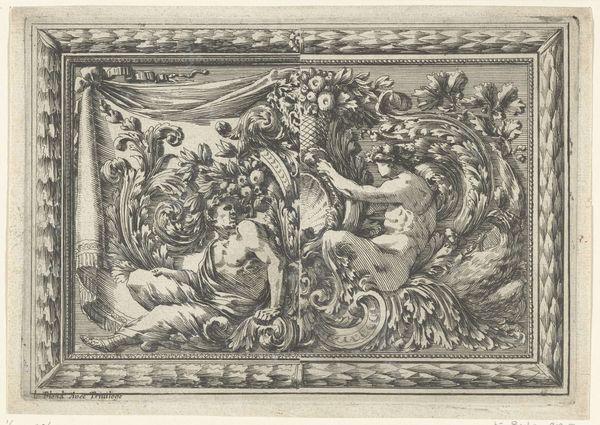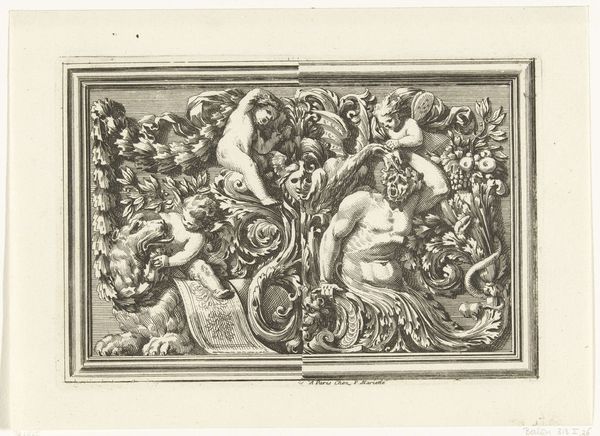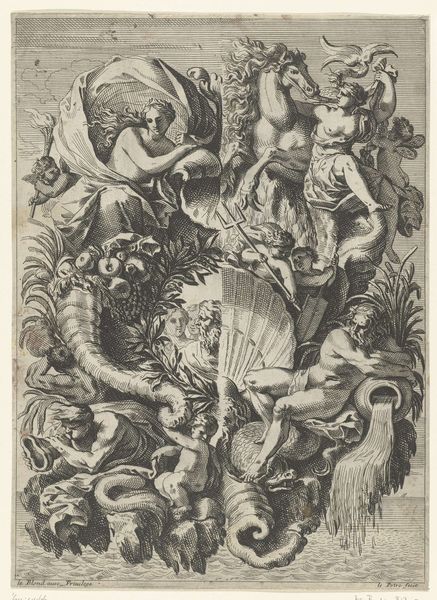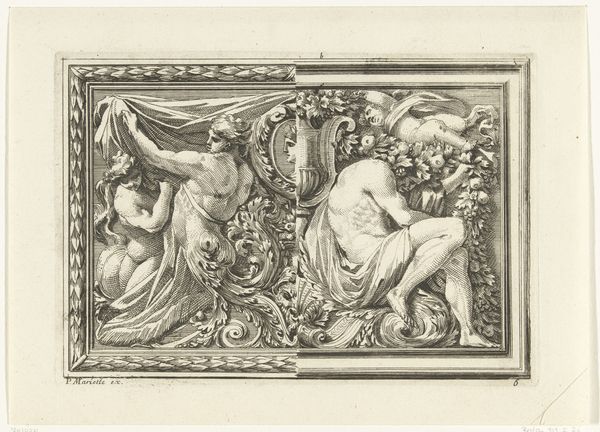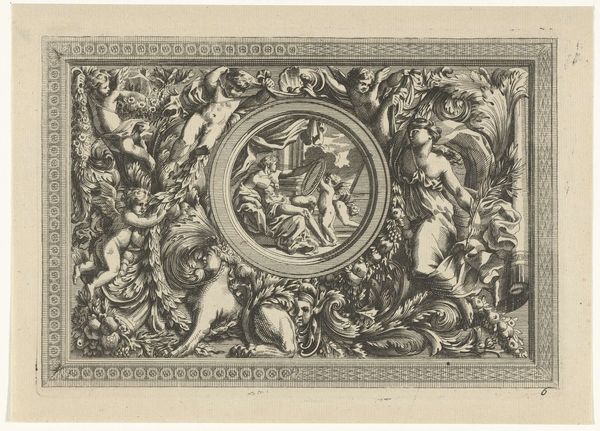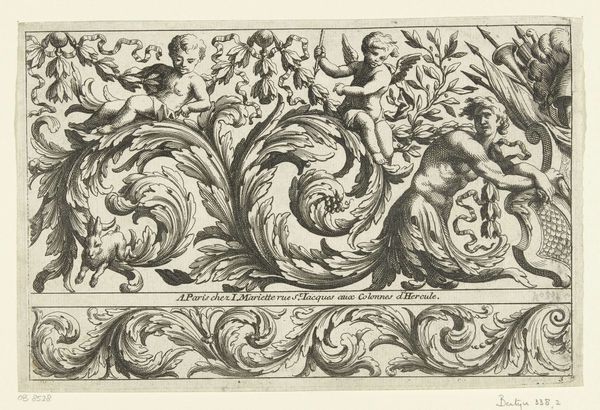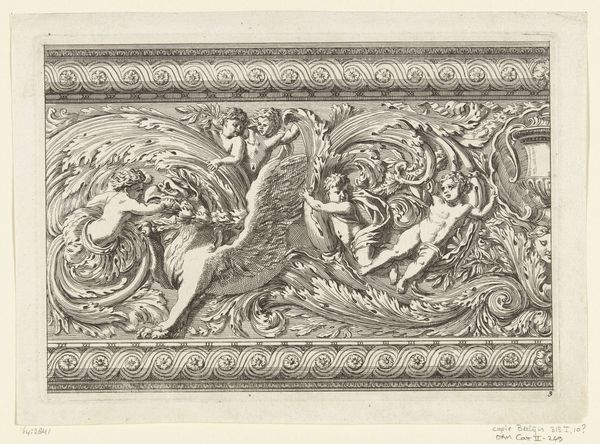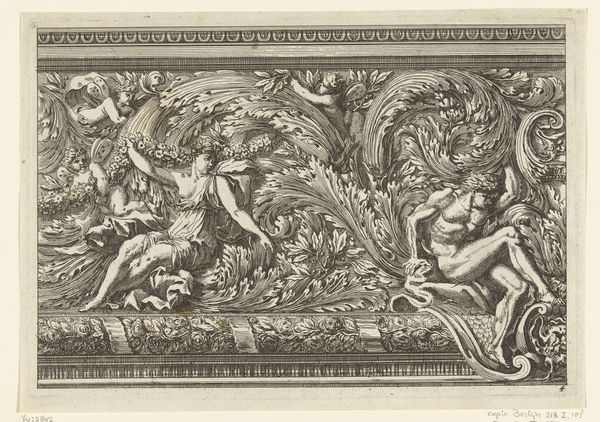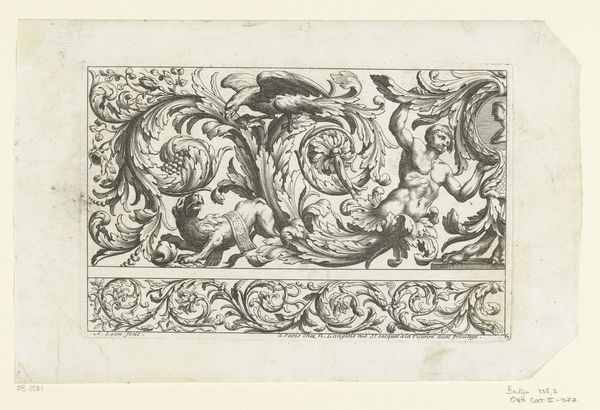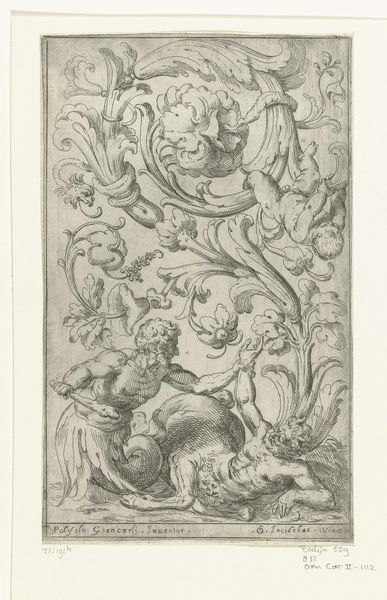
drawing, pen, engraving
#
drawing
#
allegory
#
baroque
#
pen drawing
#
figuration
#
pen
#
engraving
Dimensions: height 156 mm, width 246 mm
Copyright: Rijks Museum: Open Domain
Editor: Here we have an engraving titled "Titelblad: Verscheyde Lofwercken en andere Cieraden," made by an anonymous artist around 1670-1702. The incredible detail just blows my mind. The figures are nestled in such dense foliage. What strikes you most about its visual composition? Curator: Its brilliance lies precisely in that dense, interwoven tapestry of forms. Note how the artist orchestrates the interplay of light and shadow, achieved through masterful pen work and engraving techniques. Observe the balance between the organic—the scrolling leaves and blossoms—and the geometric. It creates an almost overwhelming, yet meticulously controlled visual experience. Editor: Overwhelming is the right word! It feels like there's almost too much to take in at once. What do you make of the figures? Curator: They are integral to the design, functioning as focal points within the ornate structure. The figures themselves are posed to direct our eye, weaving them further into the structural elements. Consider the lines; see how the artist uses line to create depth and volume, particularly in the rendering of musculature. What overall structure emerges from these relationships, from foreground to background? Editor: I see what you mean about the musculature, but honestly, I am too preoccupied deciphering all the swirling decoration! How does all of this communicate a distinct atmosphere of the baroque period? Curator: Its ornamentation adheres to the sensibilities of the era. These curving forms communicate a particular ethos or style through an accumulation of aesthetic relationships. Ultimately, we look for an internal visual system. This helps to show its adherence to certain notions of beauty, taste, and artistry specific to the period. The very act of interpretation demands rigorous visual parsing. Editor: This was incredibly enlightening! The formal aspects have much to tell if we know how to see it. Curator: Indeed! We appreciate the structure, line and organization in the artwork itself, and how that shapes our perceptions.
Comments
No comments
Be the first to comment and join the conversation on the ultimate creative platform.
